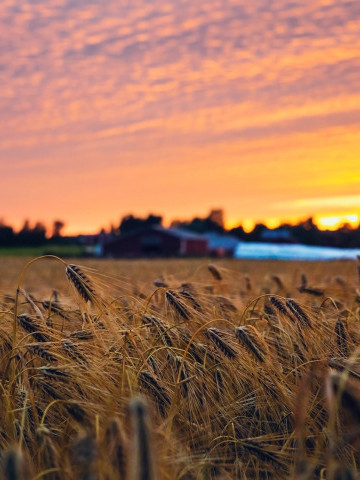
Bioekonomi
I bloggen Bioekonomi får du veta mer om Yrkeshögskolan Novias forsknings-, utvecklings- och innovationsverksamhet inom forskningsområdet systemomställning för att bygga resiliens. Majoriteten av personalen finns huvudsakligen i Raseborg. Här bildar forskare, projektarbetare, lärare, studerande och administrativ personal en dynamisk helhet. På vår blogg kan du läsa om vilka vi är, vad vi gör och om våra resultat. Välkommen!
Vid frågor eller feedback kontakta bloggens administratör Heidi Barman-Geust (Heidi.barman-geust(a)novia.fi)
Vi följer CC BY 4.0 om inget annat nämns.
Systemic Transformation to Build Resilience is one of Novia University of Applied Sciences six' research areas. The activity is mostly located in Raseborg, in southern Finland. As a dynamic unity, our researchers, project workers, teachers, students and administrative personnel produce versatile results in research, development and innovation. We blog about who we are, what we do, what our conclusions are, and how we implement them. Welcome!
If you have questions, please contact Heidi Barman (Heidi.barman-geust(a)novia.fi)
We folllow CC BY 4.0 if nothing else is stated.
Wetland Biodiversity Monitoring in Västankvarn
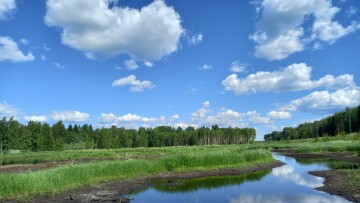
Monitoring aquatic bodies such as the wetlands is crucial to ensure its effective role in the environment. As part of our internship in Tulevaisuuden maanviljelijät, Anna and I were tasked to conduct water quality analysis and biodiversity monitoring in two wetlands in Västankvarn, Ingå. Aside from water quality, biodiversity can be an important indicator to understand how wetlands serve as habitats for different organisms.
To monitor biodiversity, we focused on the following: invertebrates, vegetation and water fowls. There are different ways to observe the species in the wetlands, but our methods were based on previous studies that were modified to accommodate our limitations on time.
Catching invertebrates for monitoring involves creating insect traps made from glass jars with funnels, attached on wooden sticks. We set five insect traps for each wetland, spread randomly between 0.25-0.75m water depth for 48 hours. After collecting, we sieved them and identified the collected organisms.
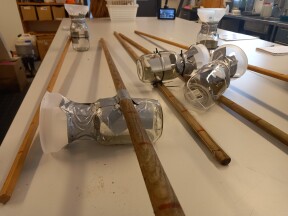
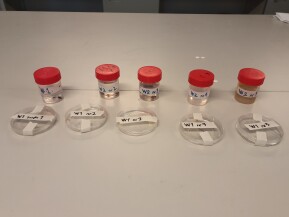
For vegetation, we used a 0.25 square meter measuring tool (0.5mx 0.5m) to sample above ground vegetation. Sampling was done during the months of June and July. A total of 16 sample points were done for one wetland and 9 sample points for the second wetland. The square was placed randomly on areas around the wetland and plants inside the square were collected, recorded and identified. For aquatic plants, a round count method was conducted to visually identify the vegetation species.
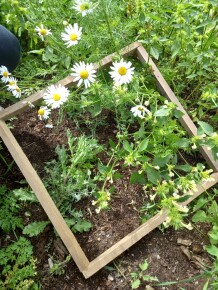
Lastly, water fowls monitoring on the other hand involved the round count method where we walked around the wetlands at a steady, slow pace to observe the birds in the area. We used the binoculars and a camera to document the fowls. This was conducted in June where more birds reside there for nesting and feeding.
Based on our internship experience, we learned that wetlands serve as a good habitat for both plants and animals. In addition, we observed the clear connection between habitats and organisms, and how these are interconnected in an ecosystem. It was overall a good experience for us to conduct this activity- from building insect traps, to species identification and bird counting- because we learned more about how an ecosystem works and its relevance.
References for our methods:
Invertebrates: UUDENMAAN ELINKEINO-, LIIKENNE- JA YMPÄRISTÖKESKUS (Vanjärvi benthic fauna inventories and water quality monitoring)
Waterfowl: Waterfowl Round Count Manual (Zoological Museum)
Vegetation: Eeva Vaahtera. (2012). Itseohjautva kastillisuuden alkukehetsy naketulla taajamakosteikolla - tapaus Nummelan Portti
Bioekonomi
Blogginlägg som är granskat av Novias redaktionsråd är utmärkta med nyckelordet "Granskat inlägg".
Vi följer CC-BY 4.0 om inget annat nämns.
Ansvarsfriskrivning: Författaren/författarna ansvarar för för fakta, möjlig utebliven information och innehållets korrekthet i bloggen. Texterna har genomgått en granskning, men de åsikter som uttrycks är författarens egna och återspeglar inte nödvändigtvis Yrkeshögskolan Novias ståndpunkter.
Disclaimer: The author(s) are responsible for the facts, any possible omissions, and the accuracy of the content in the blog.The texts have undergone a review, however, the opinions expressed are those of the author and do not necessarily reflect the views of Novia University of Applied Sciences.